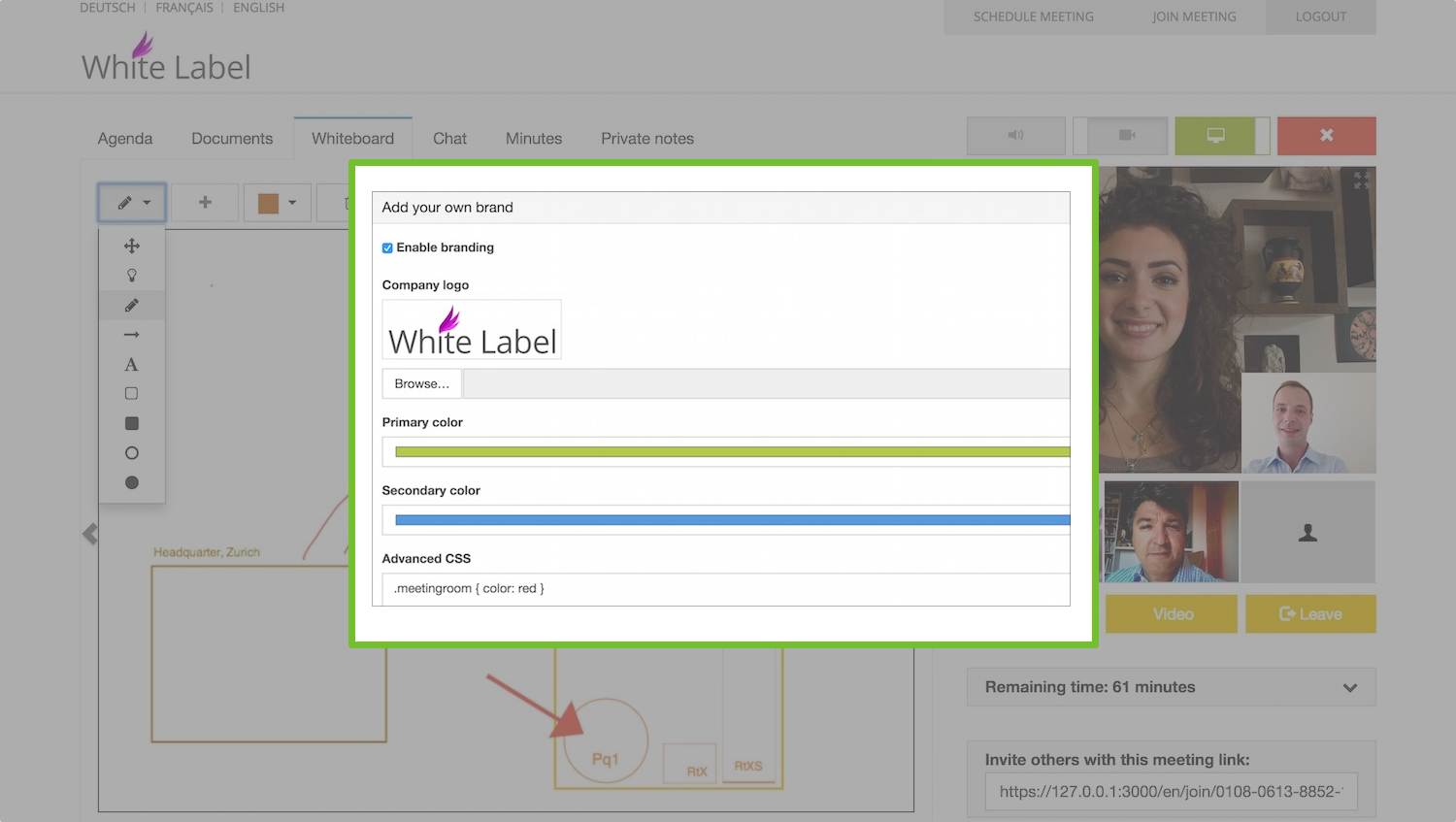
Branded video conferencing rooms enable personalised inside sales
More and more companies are using video conferencing tools to conduct business communications in an effective manner. Video conferencing can be used as a tool for internal communication between geographically dispersed teams of sales representatives, marketing personnel, product owners, managers, and other employees in order for them to be able to work more closely, despite the physical distance. Furthermore, businesses are also starting to use video conferencing as a way to enable face-to-face communications with partners, suppliers, investors, and clients that are located abroad. This process in known as inside sales.
What is video conferencing generally used for within organizations?
According to a survey conducted by Polycom and Redshift Research, as video conferencing becomes available to virtually all employees who own a mobile device or a laptop, users in different business departments within organizations use video in various ways, depending on their needs:
CEOs and founders use or would use video conferencing to enable a flexible working schedule and inter- office/local meetings (50% each). These are followed by other reasons such as: international meetings (46%), new business/sales and company/department meetings (39% each).
- Marketing departments are the most frequent users of video collaboration with 64% using video at least weekly. They are followed by IT/engineering and facilities with 62% using video at least weekly.
- When it comes to daily usage of video at work, HR departments are the top users (32% indicate they use video conferencing daily), followed by sales executives (28% indicate they use video conferencing daily).
- 61% of respondents in IT/engineering departments and 58% of respondents in manufacturing/supply chain departments are most likely to use video to collaborate face to face with colleagues internationally. These two departments are more likely to use collaboration for international meetings than local, in-country video meetings.
76% of decision makers are now using video conferencing at work with 56% of video users taking part in video calls at least once a week. The survey has revealed that in Brazil and Singapore that number increases significantly, with more than two-thirds of respondents in these countries using video conferencing at least once a week.
In what concerns using video conferencing for new business, 44% of Brazilian respondents stated that they use or would use video conferencing for new business. At a global level, 38% of respondents use video, or would use video, for new business.
According to another report issued by Ovum, companies are using video conferencing for a wide range of scenarios. These include:
- Salespeople are likely to use video conferencing to keep in touch with clients during the whole sales process and even after closing the deal.
- Customer service representatives use video conferencing to provide customers with best-in-class support by leveraging the advantages of face-to-face communication.
- Banks use video to connect their customers to tellers and financial advisors while insurance companies use it to connect claims adjusters with both customers and agents in the field.
#### The rise of inside sales
Many B2B companies are making inside sales a priority. In that sense, they started investing into creating new inside sales teams, while using advanced analytics to measure and improve their productivity levels, combining inside and field sales to increase market coverage, and using selling tools appropriate to inside sales, as well as upgrading their inside sales customer engagement processes and techniques.
The inside sales wave is triggered by three main factors. The first one has to deal with B2B sellers who feel competitive pressure to cut costs, while seeking more efficient ways to sell to a larger market. The second factor has to deal with B2B buyers becoming more comfortable with purchasing and collaborating remotely via email, social media, conference calls, etc. The third factor refers to the possibility of salespeople to create a customer experience very similar to that of in-person meetings via video conferencing technologies. Some tools even allow sales representatives to create branded meeting rooms by uploading their company logo and personalising the look and feel of the virtual room with their brand colours.

Interestingly enough, since inside sales don’t translate into travelling costs, they can reduce cost-of-sales by 40-90% relative to field sales. Other important benefits include:
- Reduced sales costs per contact
- An increase in the number of contacts per day
- Greater availability and reduced response times for customers
- Inside sales teams can be specialized in various fields (industry, product, activity) at the same time, whereas field sales teams are confronted with a territory size penalty created by specialization.
- The possibility to increase the size of inside sales teams without the need for relocation of salespeople. Communication and collaboration can be done via video conferencing technologies.
Did you know that you can use branded video conferencing rooms for inside sales?
Visual aspects are never to be overlooked or underestimated. More often than not, using visual elements during a sales presentation or pitch can actually boost customers’ trust and make your brand stick. Nowadays, there are video conferencing solutions that allow you to achieve that level of personalisation. Salespeople can actually personalise the meeting room so that it looks more professional by uploading their company logo and making use of different colours that represent the brand.
By using branded video conferencing rooms, you create a personalised environment that will make you and your customers feel more at ease and further eliminate the barriers associated with physical distance. Of course, ease of use remains a top priority. Your customers should be able to access the meeting with a single click, without installing any extra software and with the minimum amount of hassle involved.
